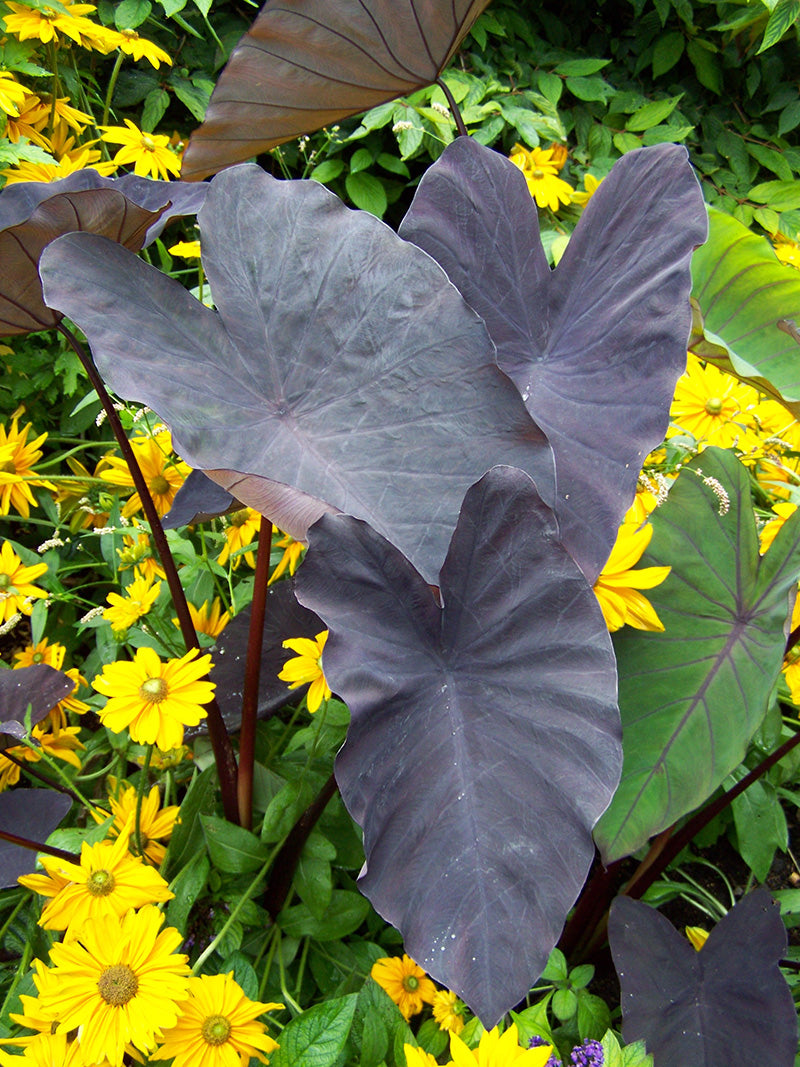
Have a good look at the image of a mixed border of Colocasia ‘Black Magic’ planted amongst a sea of Rudbeckia hirta ‘Irish Eyes’ and ask yourself what draws you to this display.
I first encountered it in Stanley Park several years ago. It was from a distance, so what intrigued me was the black void silhouetted by a wash of golden-yellow. Now imagine a bed planted solely with Black Taro or even Golden Gloriosa Daisies and if you are like me, you envision a complete void or a waste of brilliant flowers, as it is the contrast of the two that accentuates the combination of colours.
Black-Leaved Perennials and Shrubs
There are also solitary black-leaved perennials or shrubs that create their own contrast between foliage and flowers, or even fruit. Penstemon ‘Dakota Burgundy’ is one such sun-loving perennial that features glossy green leaves that transform to the darkest purple in full sun, perfectly complementing the lavender summer blooms that also bring in the hummingbirds.
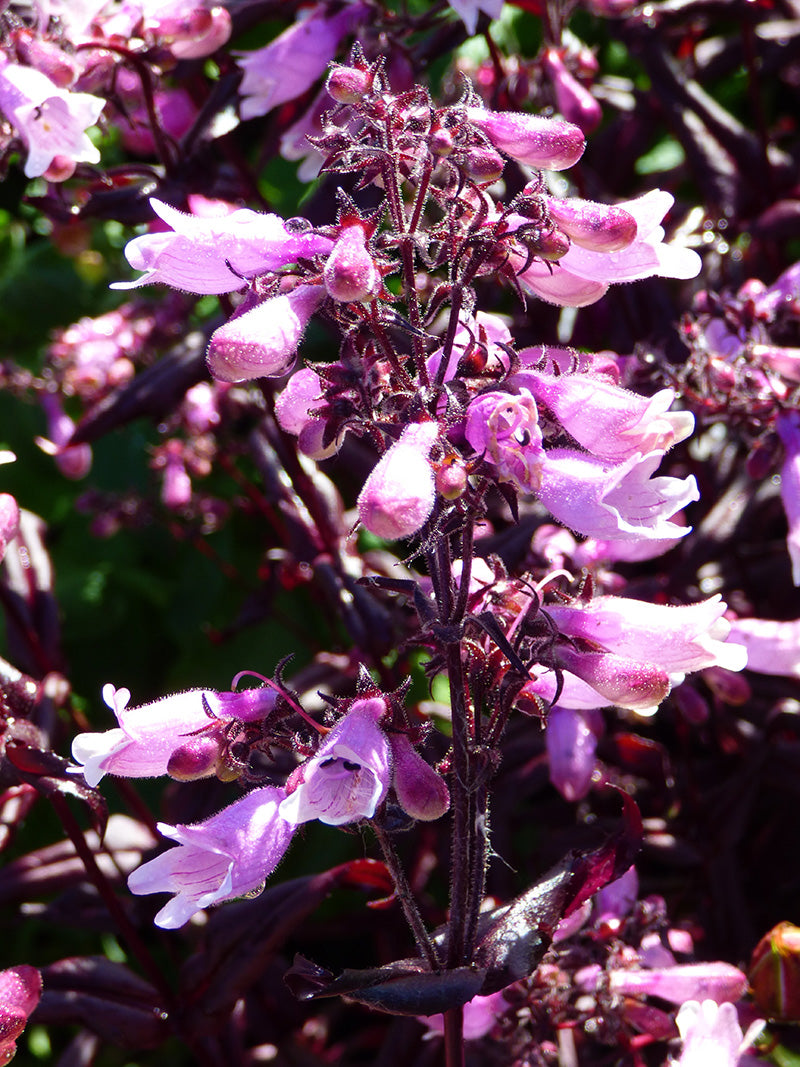
(Penstemon ‘Dakota Burgundy’)
Both Sambucus nigra ‘Eva’ and Weigela ‘Stunner’ create shrub focal points with their purplish-black foliage and contrasting shell- to magenta-pink blooms.
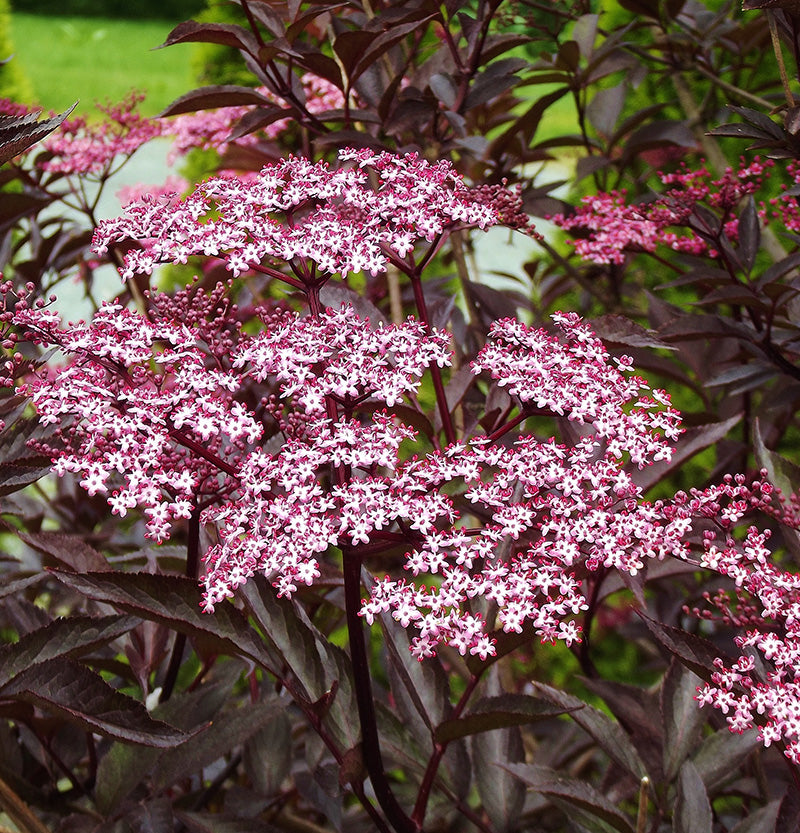
(Sambucus nigra ‘Eva’)
For fruits, look no further than Capsicum annuum ‘Black Pearl’, a jet-leaved pepper with purple blossoms followed by black fruits that ripen to fiery red (both in colour and flavour).
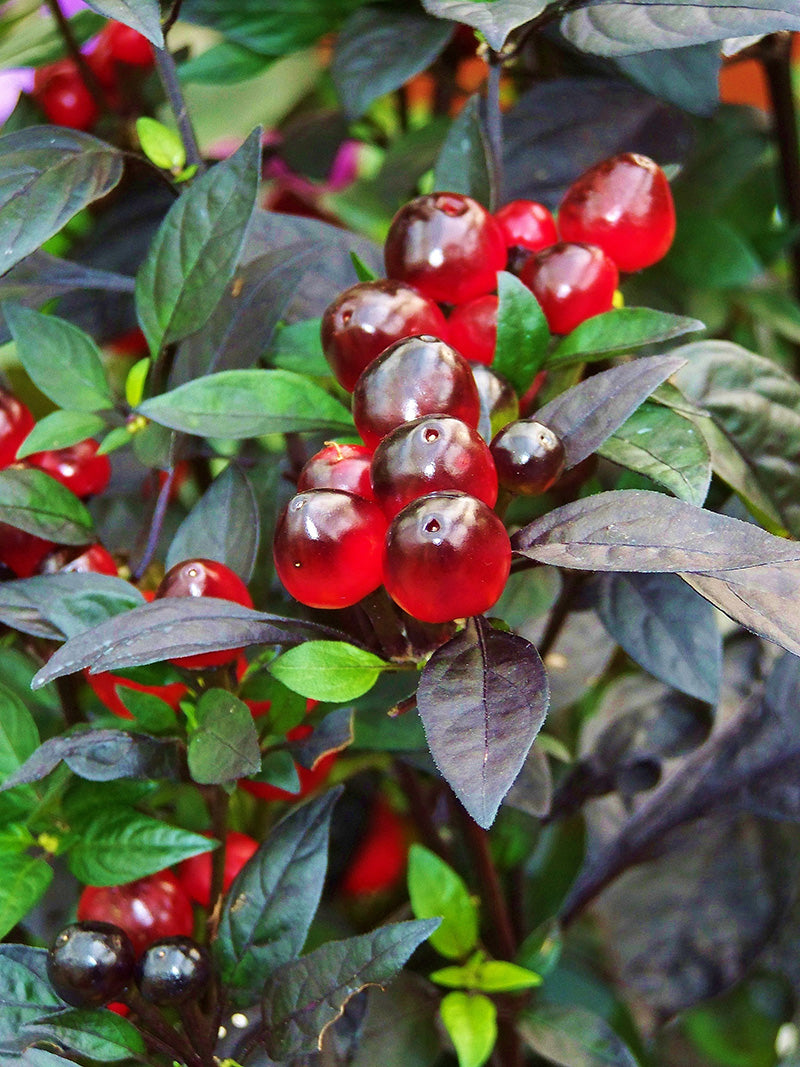
(Capsicum annuum ‘Black Pearl’)
Many of the black-leaved dahlias also make an interesting highlight in the mixed border, but especially ‘Mystic Enchantment’ with its deep purple foliage sharply contrasting the brilliant single red blooms.
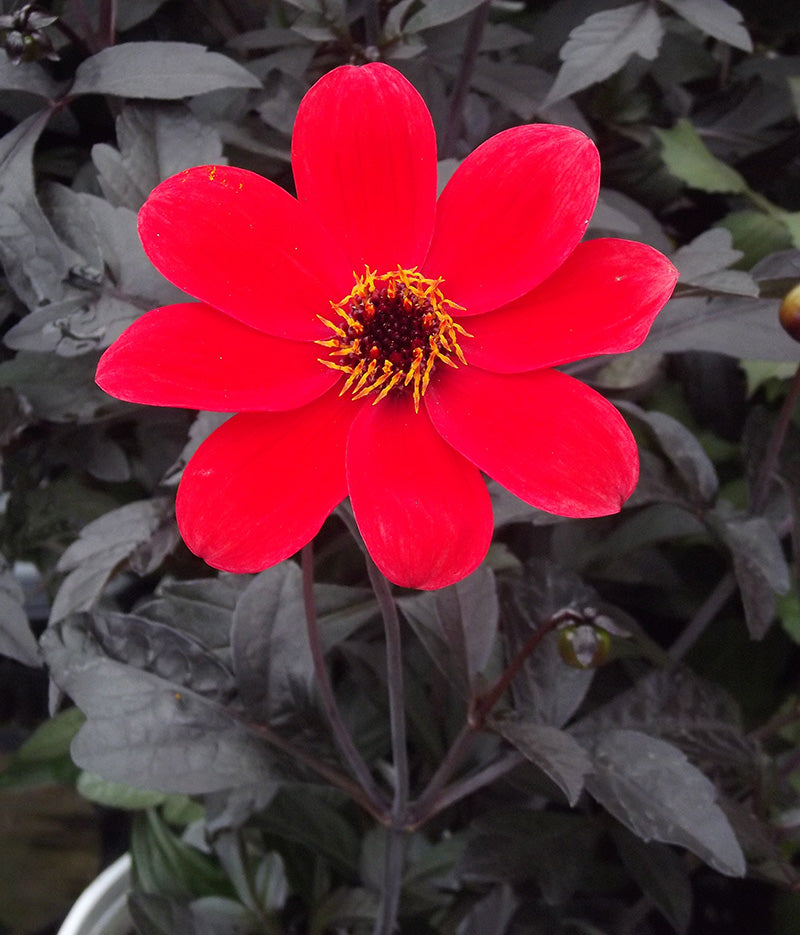
(Dahlia ‘Mystic Enchantment’)
Plants with Dark Foliage
Occasionally it is the foliage that takes precedence over everything and such is the case with the Rex Begonia ‘Harmony’s Black Beauty’ with its swirling combination of metallic violet contrasted by the pitch-black inset and margins. Euphorbia ‘Blackbird’ and Heuchera ‘Black Pearl’ have that dark foliage that works well in mixed planters when combined with Golden Creeping Jenny or Carex ‘Evergold’ to provide the necessary contrast. Similarly, the tender succulent Aeonium ‘Zwartkop’ makes an impressive centrepiece when combined with lighter-coloured Echeveria, Crassula, or Sedum.
Plants with Dark Flowers
Infrequently, the sole focus of attention is the flower itself, although this is the exception and not the rule. Take the Black Hollyhock (Alcea rosea ‘Nigra’) for instance, although it dates back to 1629 when it was described as "of a darke red like black blood," the reflective black satin petals still entice modern gardeners with their single blooms sharply contrasted by the mid-green foliage.
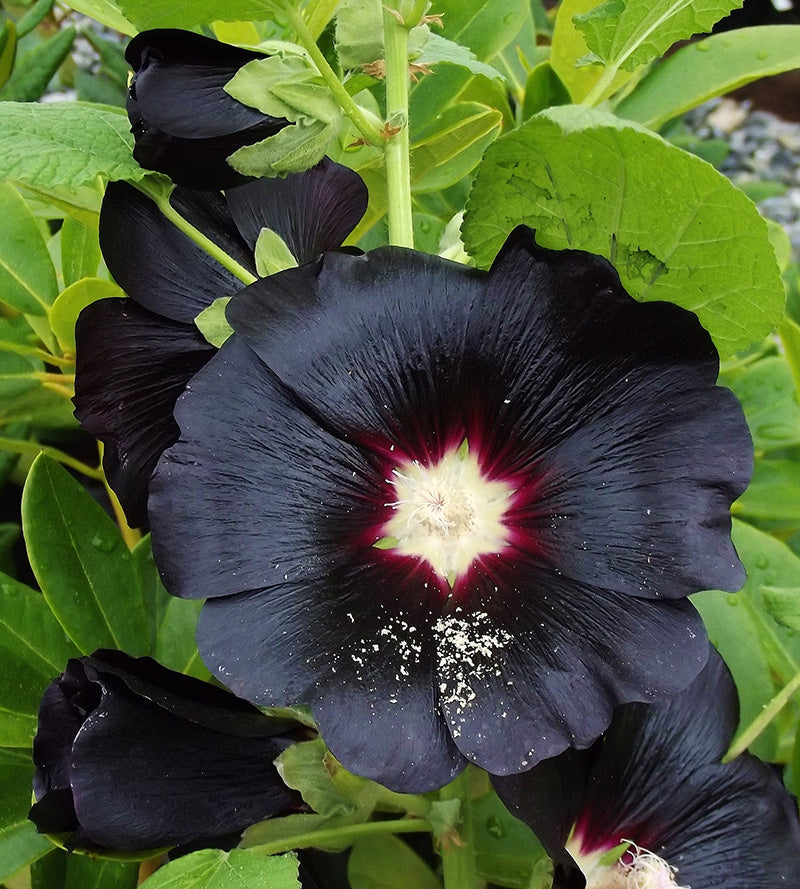
In a similar vein, Tulipa ‘Queen of Night’ is a single late variety with deep-maroon petals that literally glisten in the sun or rain. I consider many Lenten Roses (Helleborus x hybridus) in the same category, including the single-flowered ‘Black Diamond and ‘Blue Lady’ (buy this one in bloom to get the darkest flowers), as well as the double blooms of ‘Onyx Odyssey’ and ‘Dark and Handsome’, although you will need a little winter sun to make these pop.
Black Grass
While we are on the subject of Hellebores, if you find yourself looking for a container companion to Black Mondo Grass (Ophiopogon ‘Nigrescens’), try Helleborus niger which despite its Latin name (which refers to the dark roots), bears pure white flowers.
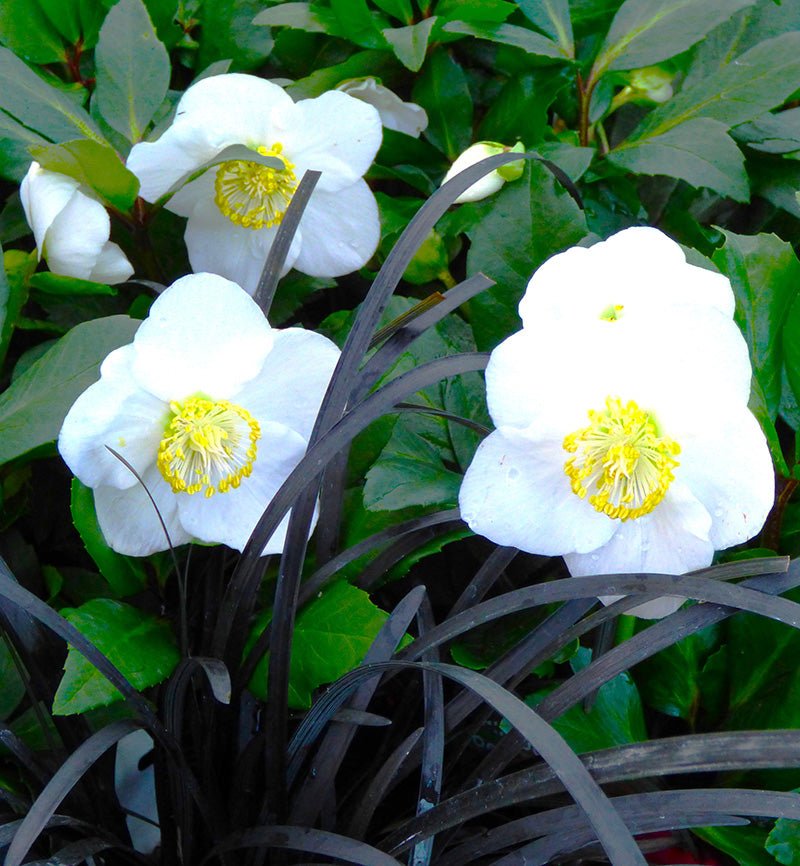
(Ophiopogon ‘Nigrescens’ & Helleborus niger)
Black Seed Cones
Occasionally petals take a back seat to showy seed cones, such as those found on Rudbeckia occidentalis ‘Black Beauty’, as these are surrounded by insignificant green sepals.

(Rudbeckia occidentalis ‘Black Beauty’)
The Best of Both Worlds
Finally, the best of both worlds can be found in the shade-tolerant Geranium phaeum ‘Samobor’ that features complementing dark-rimmed foliage with nodding burgundy-maroon flowers rising up from late spring into early summer.
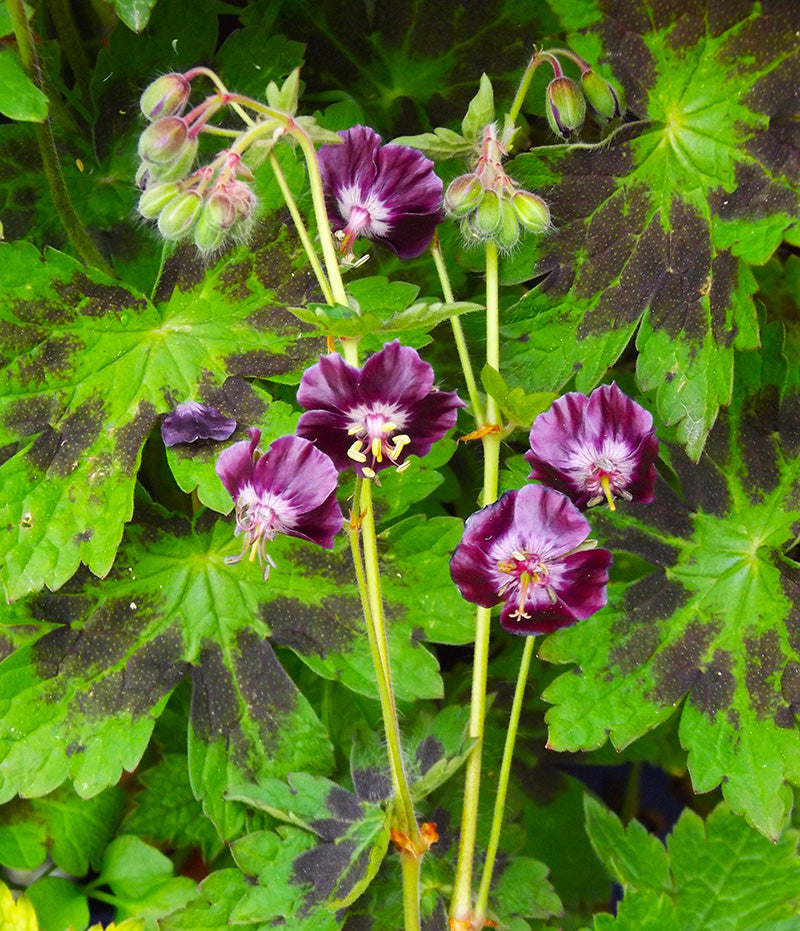 (Geranium phaeum ‘Samobor’)
(Geranium phaeum ‘Samobor’)
So, as you can see, black flowers and foliage can go just about anywhere in the garden when you choose the right plant for the right place.
All images Copyright 2023 MK Lascelle


